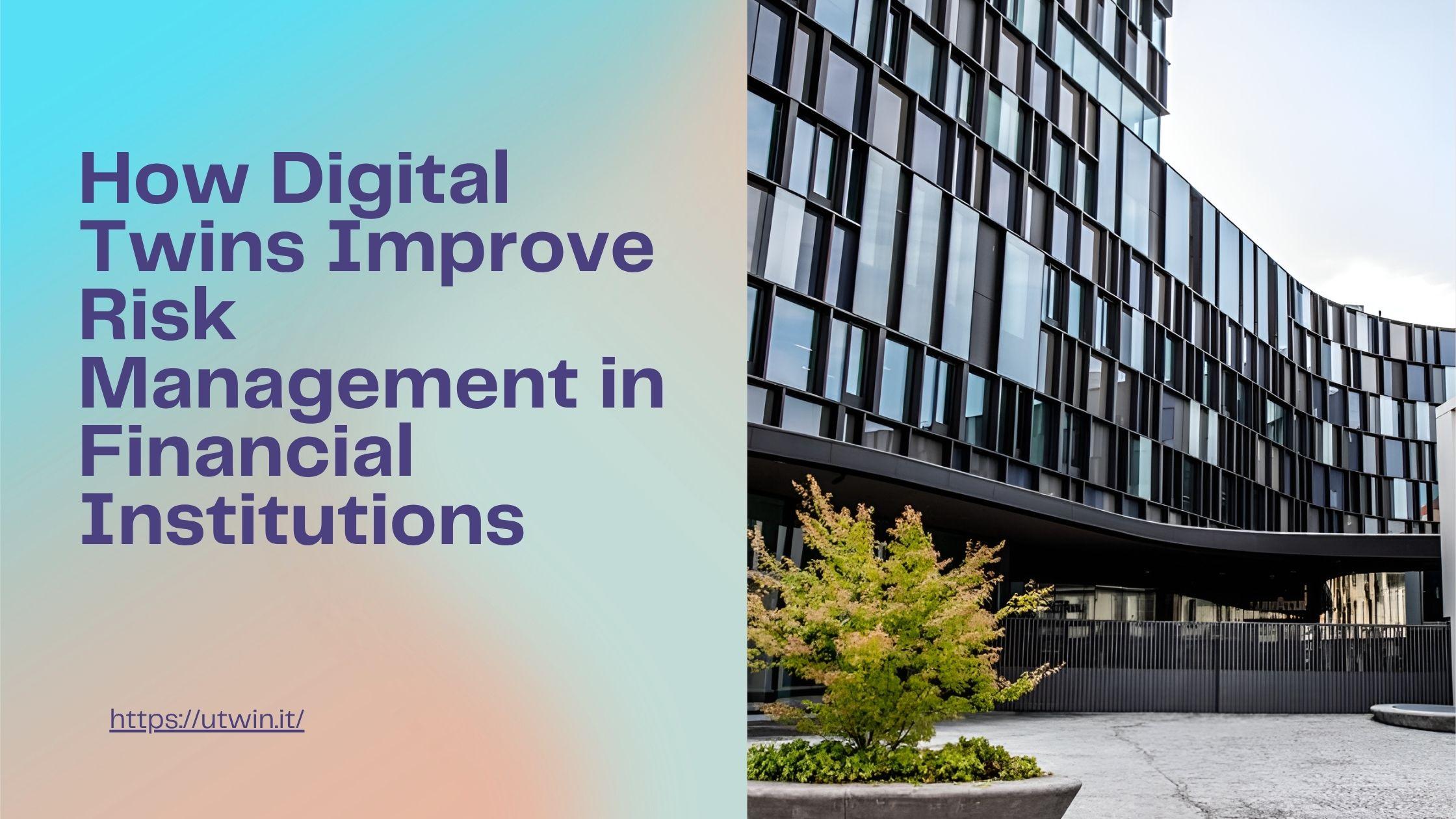How Digital Twins Improve Risk Management in Financial Institutions

In an industry where risk is inherent and decision-making relies heavily on data and predictions, financial institutions are continuously looking for ways to enhance their risk management capabilities. One emerging solution that’s gaining momentum is Digital Twin technology — a powerful tool that enables banks, insurance companies, and investment firms to simulate and monitor their operations in real-time. But how exactly do digital twins improve risk management in financial institutions? Let’s explore.
What Are Digital Twins?
A digital twin is a virtual replica of a real-world system, process, or asset. It integrates real-time data and advanced analytics to mirror the behavior of its physical counterpart. In manufacturing, digital twins are used to monitor machinery and optimize operations. In finance, this technology is now being applied to simulate market conditions, customer behaviors, internal processes, and even entire business models.
A digital twin for financial institutions might replicate:
- A customer’s financial journey
- An investment portfolio
- A bank’s internal credit system
- Enterprise-wide operations
This real-time digital representation allows decision-makers to model risks, test hypotheses, and foresee outcomes before committing to actions — a significant leap from traditional predictive models.
The Risk Landscape in Financial Institutions
Risk in the financial sector is multi-dimensional:
- Market Risk: Fluctuations in markets affecting investments.
- Credit Risk: Borrowers failing to meet obligations.
- Operational Risk: Failures in internal systems or processes.
- Liquidity Risk: Inability to meet short-term obligations.
- Cybersecurity Risk: Breaches and data theft.
- Regulatory Risk: Failing to comply with legal requirements.
Managing these requires advanced modeling, real-time insights, and rapid response strategies — all of which digital twins are uniquely suited to provide.
How Digital Twins Enhance Risk Management
1. Real-Time Monitoring and Predictive Insights
With continuous data feeds from internal and external sources, digital twins can simulate current conditions and forecast future scenarios. For instance, a digital twin of a loan portfolio could help a bank monitor repayment behavior and predict defaults before they occur.
This proactive approach allows institutions to:
- Adjust risk exposure
- Reallocate resources
- Take preventive actions before risks materialize
2. Stress Testing and Scenario Simulation
Traditional stress testing is often retrospective and infrequent. Digital twins enable dynamic stress testing, where institutions can simulate a wide range of “what-if” scenarios:
- What if interest rates spike suddenly?
- What happens to credit portfolios in a recession?
- How does a global pandemic affect customer withdrawals?
These simulations help institutions develop more resilient strategies and improve capital allocation under stress.
3. Improved Fraud Detection and Cyber Risk Management
By continuously learning from transactional behavior, digital twins can help detect anomalies faster than static fraud detection systems. If the digital twin of a customer shows behavior inconsistent with their historical profile, alerts can be triggered.
Similarly, a digital twin of IT infrastructure can simulate cyberattacks and uncover vulnerabilities before real breaches occur, significantly enhancing cybersecurity risk mitigation.
4. Credit Risk Assessment
Digital twins can model borrower profiles more comprehensively by incorporating not just historical financial data but also behavioral, transactional, and third-party data. This allows for:
- More accurate credit scoring
- Customized lending terms
- Early warning systems for delinquency
Banks can simulate how borrowers might behave under various economic scenarios, improving lending risk strategies.
5. Operational Risk Reduction
Operational inefficiencies, system failures, or human errors can cause financial and reputational damage. A digital twin of internal operations — including people, workflows, and technology systems — helps institutions identify bottlenecks and potential points of failure.
This allows:
- Better process optimization
- Reduced downtime
- Enhanced business continuity planning
6. Regulatory Compliance and Reporting
Compliance requirements are becoming increasingly complex. With digital twins, financial institutions can simulate how their processes align with regulatory mandates. For example:
- Does a new lending product meet capital adequacy standards?
- Are internal workflows aligned with AML (Anti-Money Laundering) policies?
By modeling compliance frameworks into their digital twins, organizations can reduce the risk of violations and penalties.
Real-World Example: Using Digital Twins for Portfolio Risk
Imagine a wealth management firm managing diverse client portfolios. By creating a digital twin of each portfolio, the firm can simulate different market conditions — such as inflation surges, commodity shocks, or geopolitical events — and see how each portfolio responds.
Portfolio managers can then:
- Rebalance assets proactively
- Adjust allocations to minimize downside risk
- Personalize strategies based on client risk tolerance
This level of insight was previously possible only with complex modeling, but digital twins make it scalable and real-time.
The Role of AI and Machine Learning
Digital twins are not standalone systems — they become truly powerful when integrated with AI and machine learning. These technologies help the digital twin “learn” from historical data, adapt to real-time inputs, and refine predictions over time.
For example, a digital twin of a customer profile might learn that early ATM withdrawals on weekends are often followed by overdrafts. The system could then flag similar patterns in other customers and prompt interventions.
- Art
- Causes
- Crafts
- Dance
- Drinks
- Film
- Fitness
- Food
- Games
- Gardening
- Health
- Home
- Literature
- Music
- Networking
- Other
- Party
- Religion
- Shopping
- Sports
- Theater
- Wellness

